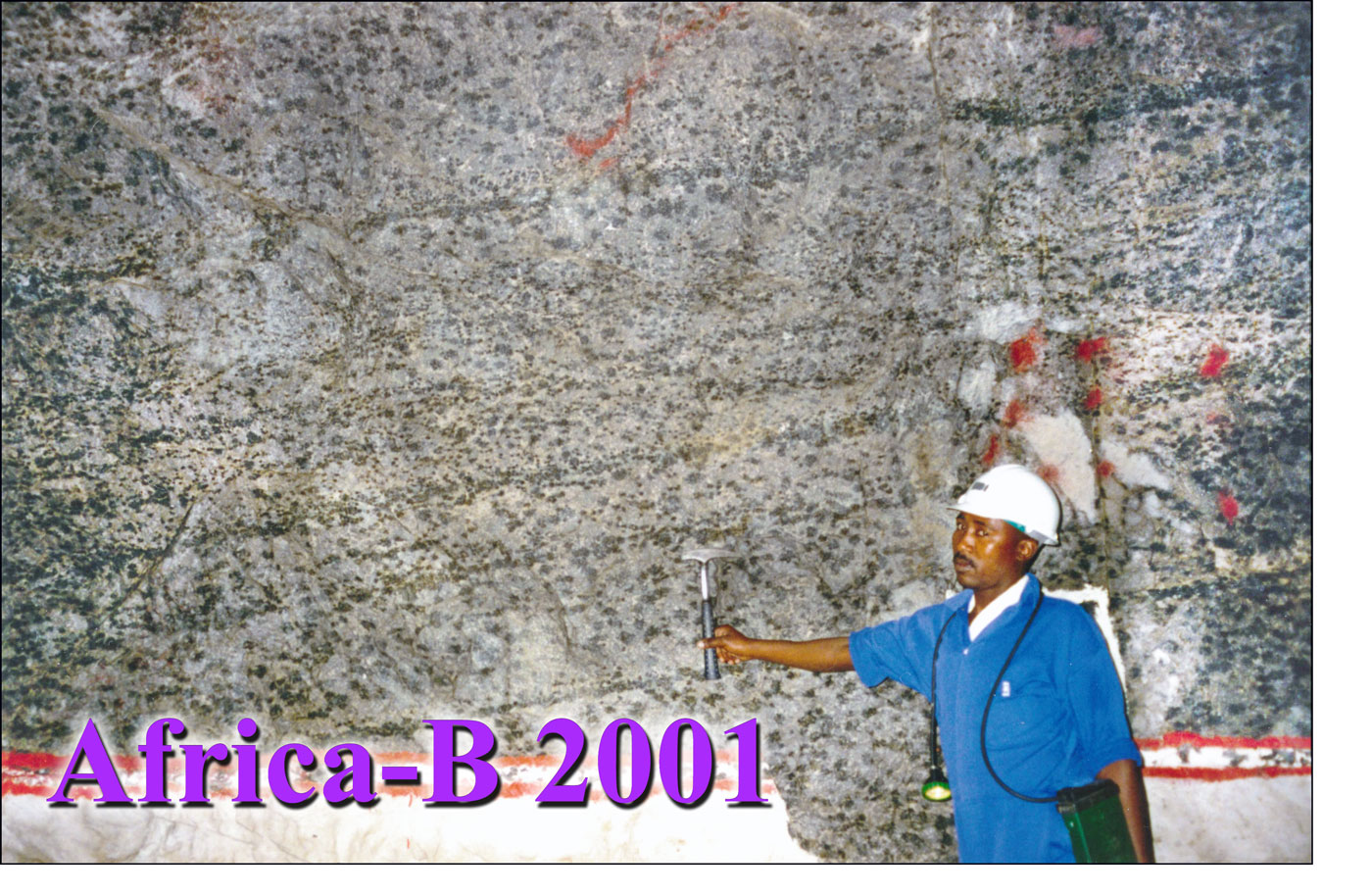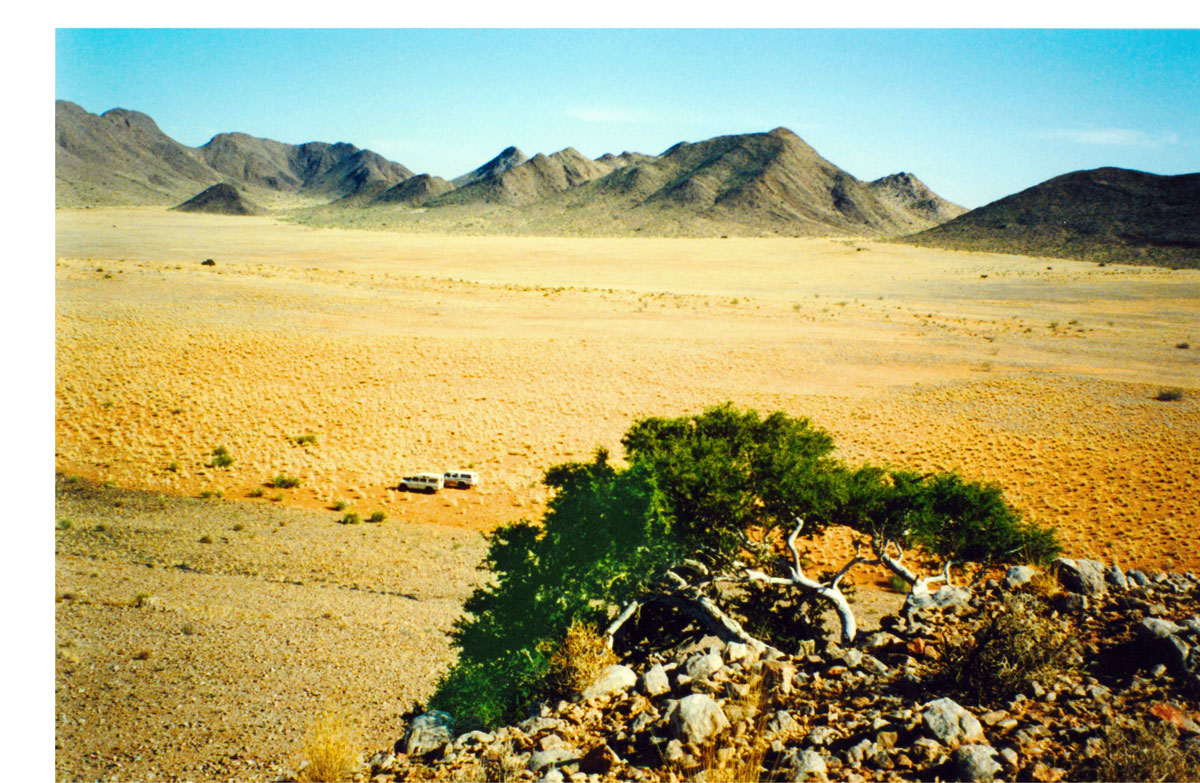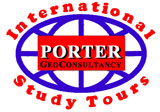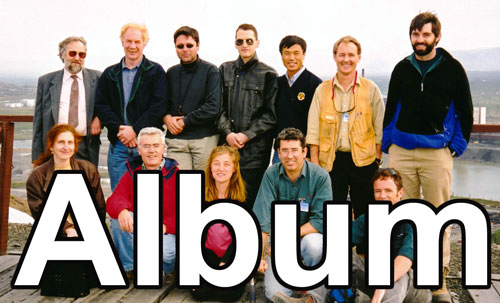
The Australian Mineral Foundation and Porter GeoConsultancy continued their International Study Tour series of professional development courses by conducting a tour of the:

• major Proterozoic Cu-Co and Zn-Pb-Ag deposits of southern and Central Africa, in Zambia, South Africa and Namibia, and
• PGE, Cr, V, Ni and Cu ores of the Bushveld Complex and associated intrusions in South Africa.

These visits were divided into two modules and supported by workshops/seminars led by international experts.

Module 1 was divided into two parts, the first focussing on sediment hosted copper in Zambia, the second on zinc-lead-silver in north-western South Africa and southern Namibia.

The first part of Module 1 in Zambia was undertaken in cooperation with the then AMIRA International, and was designed to double as the non-confidential segment of the AMIRA Project P544 - 'Proterozoic Sediment Hosted Copper Deposits' Sponsors Field Meeting, and immediately followed the restricted sponsors only meeting in Kitwe, Zambia.

 - See who went and what they saw - See who went and what they saw
|

The tour involved 2 modules, the first of which was divided into 2 parts, as follows:

|
Module 1 - Part A - Zambian Copperbelt - 6 days from 10 June 2001
|

This part of Module 1 concentrated on the sediment hosted copper-cobalt deposits in the Zambian section of the Central African Copperbelt. The program included:

 Kitwe Seminar, which began with a 2 hour confidential project progress meeting for AMIRA sponsors only. This was then followed for the remainder of the day by a seminar addressing the "The Tectonic, Geologic, Geochronologic and Metallogenic Setting of Southern and Central Africa, and the place of the Zambian Copper Belt within this framework", "The broad geology, structure and metallogeny of the Lufilian Arc", "The history and geology of copper on the Zambian Copper Belt", "The characteristics of the main deposits of the Cupriferous Arc in the D.R. of Congo" and "Discovery and geology of the Kansanshi copper deposit in Zambia". These topics were adressed by expert geologists that included Dr Sharad Master of the University of the Witwatersrand, Professor Murray Hitzman of the Colorado School of Mines, David Armstrong, a veteran consultant geologist in Zambia and Dr David Broughton from the Colorado Schol of Mines. This workshop was succeeded on the following days by visits to: Kitwe Seminar, which began with a 2 hour confidential project progress meeting for AMIRA sponsors only. This was then followed for the remainder of the day by a seminar addressing the "The Tectonic, Geologic, Geochronologic and Metallogenic Setting of Southern and Central Africa, and the place of the Zambian Copper Belt within this framework", "The broad geology, structure and metallogeny of the Lufilian Arc", "The history and geology of copper on the Zambian Copper Belt", "The characteristics of the main deposits of the Cupriferous Arc in the D.R. of Congo" and "Discovery and geology of the Kansanshi copper deposit in Zambia". These topics were adressed by expert geologists that included Dr Sharad Master of the University of the Witwatersrand, Professor Murray Hitzman of the Colorado School of Mines, David Armstrong, a veteran consultant geologist in Zambia and Dr David Broughton from the Colorado Schol of Mines. This workshop was succeeded on the following days by visits to:

 Mufulira, stratabound, quartzite-hosted, copper-cobalt deposit located 30 km north of Kitwe; Mufulira, stratabound, quartzite-hosted, copper-cobalt deposit located 30 km north of Kitwe;

 Nkana, stratabound, dolomitic argillite-hosted, copper-cobalt deposit exploited from four open pit and four underground mines; Nkana, stratabound, dolomitic argillite-hosted, copper-cobalt deposit exploited from four open pit and four underground mines;

 Nchanga, a stratabound Cu-Co deposit hosted by both arenites and argillites in different parts of the host seqeunce; Nchanga, a stratabound Cu-Co deposit hosted by both arenites and argillites in different parts of the host seqeunce;

 Konkola and Konkola North Core, ~15 km north of Nchanga, stratabound Cu-Co mineralisation, hosted by banded siltstones and sandy shales; Konkola and Konkola North Core, ~15 km north of Nchanga, stratabound Cu-Co mineralisation, hosted by banded siltstones and sandy shales;

 Chambishi between Nkana and Nchanga, hosted by strongly deformed, predominantly biotite-quartz argillite; Chambishi between Nkana and Nchanga, hosted by strongly deformed, predominantly biotite-quartz argillite;

 Chibuluma in the Lower Roan Footwall Formation, stratigraphically below the 'Ore Shale' position where most Copper Belt deposits are located. Chibuluma in the Lower Roan Footwall Formation, stratigraphically below the 'Ore Shale' position where most Copper Belt deposits are located.

 Kalulushi Core, where an extensive core storage facility houses a collection of drill core that was used to illustrate the stratigraphy of the Copper Belt. Kalulushi Core, where an extensive core storage facility houses a collection of drill core that was used to illustrate the stratigraphy of the Copper Belt.

Some 36 participants registered for Module 1A, which was too large a party to be safely accommodated as a single group on underground visits. As a consequence, they were split into 3 groups of 12 going to different parts of the same mine and rotating, or to alternative mines. The latter applied when two groups visited different sections of the Nchanga mine, while the third group went underground at the similar Konkola mine to the north.

|
Module 1 - Part B - Zinc, Lead and Silver in South Africa and Namibia - 7 days from 18 June 2001
|

This second part of Module 1 concentrated on the series of large zinc, lead and copper deposits distributed over an interval of 500 km on the south-western and western margins of the Kaapvaal/Kalahari Craton in the Northern Cape Province of South Africa and in southern Namibia. These are found in both the late Palaeo- and Mesoproterozoic metamorphics of the Namaqua Mobile Belt and in the late Neo-Proterozoic sediments and volcanics of the Gariep Province in Namibia. The program included visits to:

 Black Mountain, conformable galena-sphalerite-chalcopyrite-pyrrhotite lenses, progressively enveloped by magnetite-rich rocks, schist and quartzite. Black Mountain, conformable galena-sphalerite-chalcopyrite-pyrrhotite lenses, progressively enveloped by magnetite-rich rocks, schist and quartzite.

 Broken Hill - Aggeneys, two conformable 'massive sulphide' bodies, sandwiched by magnetite-amphibole and garnet rich schist and quartzites. Broken Hill - Aggeneys, two conformable 'massive sulphide' bodies, sandwiched by magnetite-amphibole and garnet rich schist and quartzites.

 Gamsberg, conformable, upper amphibolite-facies hosted massive sulphides in a quartz-garnet-amphibole-magnetite gangue, and a large sheath fold; Gamsberg, conformable, upper amphibolite-facies hosted massive sulphides in a quartz-garnet-amphibole-magnetite gangue, and a large sheath fold;

 Rosh Pinah, a stratabound Zn, Pb, Ag deposit, hosted by arkoses and quartzites of the Neoproterozoic to early Palaeozoic Gariep Complex; Rosh Pinah, a stratabound Zn, Pb, Ag deposit, hosted by arkoses and quartzites of the Neoproterozoic to early Palaeozoic Gariep Complex;

 Field Traverse, a half field traverse of the host lithologies/sequence of the Rosh Pinah District. Field Traverse, a half field traverse of the host lithologies/sequence of the Rosh Pinah District.

|
Module 2 - , Mafic Intrusion Related PGE, Cr, V, Ni, Cu - 10 days, from 25 June, 2001
|

The main focus of this module was on the deposits of the Bushveld Complex and its coeval satellite intrusions. It provided a unique opportunity to study the largest and most complete mineralised mafic system in the world, and included:

 Johannesburg Workshop, "The Setting, Geology and Metallogeny of the Mafic Complexes of Southern Africa", led by internationally renowned expert, Professor Grant Cawthorn of the Witwatersrand University. Johannesburg Workshop, "The Setting, Geology and Metallogeny of the Mafic Complexes of Southern Africa", led by internationally renowned expert, Professor Grant Cawthorn of the Witwatersrand University.

This day long workshop was followed in succeeding days by visits to major mines and field traverses, as follows:

 Anglo Platinum, Rustenburg Section PGE, five adjacent mines exploiting both the Merensky and UG2 Reefs of the Bushveld Complex Western Lobe; Anglo Platinum, Rustenburg Section PGE, five adjacent mines exploiting both the Merensky and UG2 Reefs of the Bushveld Complex Western Lobe;


 Samancor Elandsdrift Chromite, which mines over a strike length of ~50 km, mainly from the LG6 layer of the Bushveld Complex Western Lobe, Lower Critical Zone; Samancor Elandsdrift Chromite, which mines over a strike length of ~50 km, mainly from the LG6 layer of the Bushveld Complex Western Lobe, Lower Critical Zone;

 Potgietersrust (now Mogalakwena) Platinum, which exploits the thick, bulk-mineable Platreef on the eastern margin of the Bushveld Complex Northern Lobe; Potgietersrust (now Mogalakwena) Platinum, which exploits the thick, bulk-mineable Platreef on the eastern margin of the Bushveld Complex Northern Lobe;

 East Bushveld Field Traverses, across outcropping sections of the Bushveld Complex, from the layered lower mafic section to the upper acid rocks, and exposures of the immediate host to the Merensky, UG2 and other chromitites; East Bushveld Field Traverses, across outcropping sections of the Bushveld Complex, from the layered lower mafic section to the upper acid rocks, and exposures of the immediate host to the Merensky, UG2 and other chromitites;

 Mapochs Iron-Vanadium, exploiting one of the vanadium bearing titaniferous magnetite bands of the Bushveld Complex Eastern Lobe, Upper Zone; Mapochs Iron-Vanadium, exploiting one of the vanadium bearing titaniferous magnetite bands of the Bushveld Complex Eastern Lobe, Upper Zone;

 Palabora Cu-Fe-P, hosted by the carbonatite core to the larger dunite-pyroxenite Phalaborwa Igneous Complex, 150 km ENE of the coeval Bushveld Complex; Palabora Cu-Fe-P, hosted by the carbonatite core to the larger dunite-pyroxenite Phalaborwa Igneous Complex, 150 km ENE of the coeval Bushveld Complex;

 Nkomati - Ni-(Co-Cu-PGE), hosted by the harzburgite, gabbro, pyroxenite and gabbro-norite Uitkomst Complex 150 km ESE of the coeval Bushveld Complex. Nkomati - Ni-(Co-Cu-PGE), hosted by the harzburgite, gabbro, pyroxenite and gabbro-norite Uitkomst Complex 150 km ESE of the coeval Bushveld Complex.


This study tour was planned, organised and managed by Porter GeoConsultancy as a professional development course on the curriculum of the Australian Mineral Foundation. Module 1A of the tour was designed in close cooperation with AMIRA International.

Images: Top left - Layered anorthosite in the Bushveld Complex; Lower right - field scene in the Northern Cape of South Africa.

|














